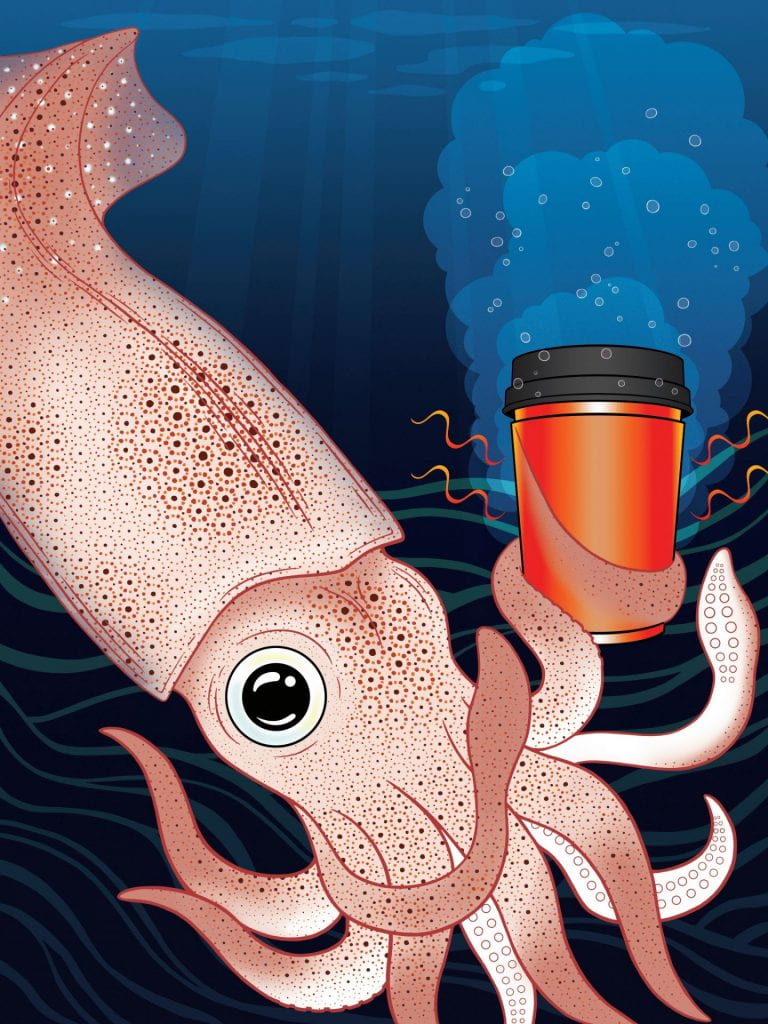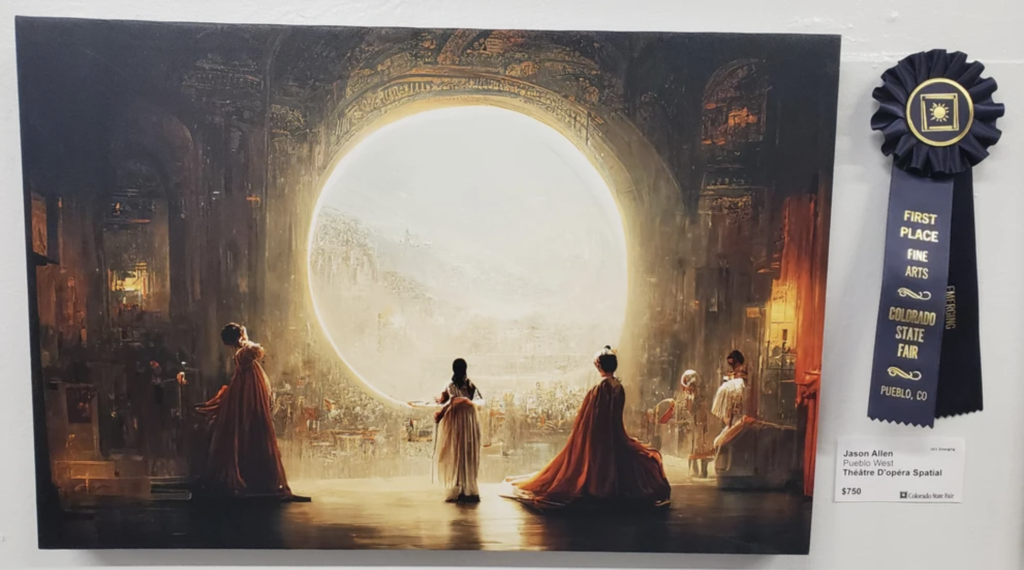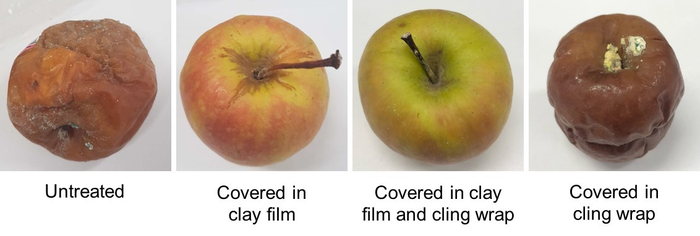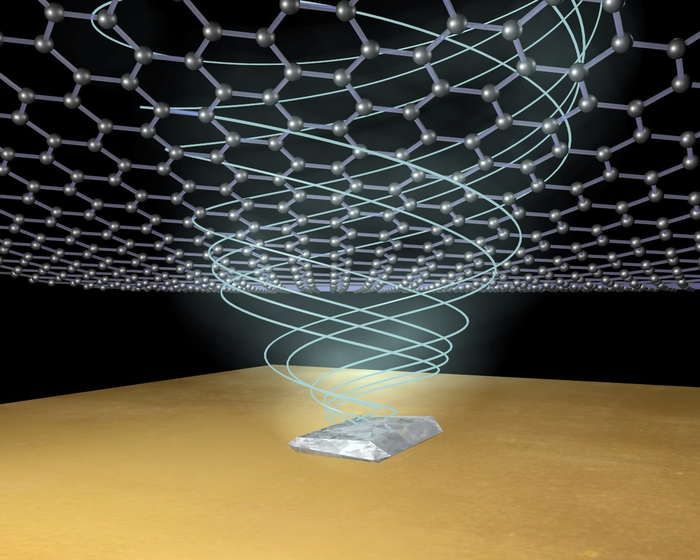It’s funny how you think you know something and then realize you don’t. I’ve been hearing about cold fusion/fusion energy for years but never really understood what the term meant. So, this post includes an explanation, as well as, an overview, and a Cold Fusion Rap to ‘wrap’ it all up. (Sometimes I cannot resist a pun.)
Fusion energy explanation (1)
The Massachusetts Institute of Technology (MIT) has a Climate Portal where fusion energy is explained,
Fusion energy is the source of energy at the center of stars, including our own sun. Stars, like most of the universe, are made up of hydrogen, the simplest and most abundant element in the universe, created during the big bang. The center of a star is so hot and so dense that the immense pressure forces hydrogen atoms together. These atoms are forced together so strongly that they create new atoms entirely—helium atoms—and release a staggering amount of energy in the process. This energy is called fusion energy.
More energy than chemical energy
Fusion energy, like fossil fuels, is a form of stored energy. But fusion can create 20 to 100 million times more energy than the chemical reaction of a fossil fuel. Most of the mass of an atom, 99.9 percent, is contained at an atom’s center—inside of its nucleus. The ratio of this matter to the empty space in an atom is almost exactly the same ratio of how much energy you release when you manipulate the nucleus. In contrast, a chemical reaction, such as burning coal, rearranges the atoms through heat, but doesn’t alter the atoms themselves, so we don’t get as much energy.
Making fusion energy
For scientists, making fusion energy means recreating the conditions of stars, starting with plasma. Plasma is the fourth state of matter, after solids, liquids and gases. Ice is an example of a solid. When heated up, it becomes a liquid. Place that liquid in a pot on the stove, and it becomes a gas (steam). If you take that gas and continue to make it hotter, at around 10,000 degrees Fahrenheit (~6,000 Kelvin), it will change from a gas to the next phase of matter: plasma. Ninety-nine percent of the mass in the universe is in the plasma state, since almost the entire mass of the universe is in super hot stars that exist as plasma.
To make fusion energy, scientists must first build a steel chamber and create a vacuum, like in outer space. The next step is to add hydrogen gas. The gas particles are charged to produce an electric current and then surrounded and contained with an electromagnetic force; the hydrogen is now a plasma. This plasma is then heated to about 100 million degrees and fusion energy is released.
…
Fusion energy explanation (2)
A Vancouver-based company, General Fusion, offers an explanation of how they have approached making fusion energy a reality,
How It Works: Plasma Injector Technology at General Fusion from General Fusion on Vimeo.
After announcing that a General Fusion demonstration plant would be built in the UK (see June 17, 2021 General Fusion news release), there’s a recent announcement about an agreement with the UK Atomic Energy Authority (UKAEA) to commericialize the technology, from an October 17, 2022 General Fusion news release,
Today [October 17, 2022], General Fusion and the UKAEA kick off projects to advance the commercialization of magnetized target fusion energy as part of an important collaborative agreement. With these unique projects, General Fusion will benefit from the vast experience of the UKAEA’s team. The results will hone the design of General Fusion’s demonstration machine being built at the Culham Campus, part of the thriving UK fusion cluster. Ultimately, the company expects the projects will support its efforts to provide low-cost and low-carbon energy to the electricity grid.
General Fusion’s approach to fusion maximizes the reapplication of existing industrialized technologies, bypassing the need for expensive superconducting magnets, significant new materials, or high-power lasers. The demonstration machine will create fusion conditions in a power-plant-relevant environment, confirming the performance and economics of the company’s technology.
“The leading-edge fusion researchers at UKAEA have proven experience building, commissioning, and successfully operating large fusion machines,” said Greg Twinney, Chief Executive Officer, General Fusion. “Partnering with UKAEA’s incredible team will fast-track work to advance our technology and achieve our mission of delivering affordable commercial fusion power to the world.”
“Fusion energy is one of the greatest scientific and engineering quests of our time,” said Ian Chapman, UKAEA CEO. “This collaboration will enable General Fusion to benefit from the ground-breaking research being done in the UK and supports our shared aims of making fusion part of the world’s future energy mix for generations to come.”
…
I last wrote about General Fusion in a November 3, 2021 posting about the company’s move (?) to Sea Island, Richmond,
I first wrote about General Fusion in a December 2, 2011 posting titled: Burnaby-based company (Canada) challenges fossil fuel consumption with nuclear fusion. (For those unfamiliar with the Vancouver area, there’s the city of Vancouver and there’s Vancouver Metro, which includes the city of Vancouver and others in the region. Burnaby is part of Metro Vancouver; General Fusion is moving to Sea Island (near Vancouver Airport), in Richmond, which is also in Metro Vancouver.) Kenneth Chan’s October 20, 2021 article for the Daily Hive gives more detail about General Fusion’s new facilities (Note: A link has been removed),
…
The new facility will span two buildings at 6020 and 6082 Russ Baker Way, near YVR’s [Vancouver Airport] South Terminal. This includes a larger building previously used for aircraft engine maintenance and repair.
The relocation process could start before the end of 2021, allowing the company to more than quadruple its workforce over the coming years. Currently, it employs about 140 people.
The Sea Island [in Richmond] facility will house its corporate offices, primary fusion technology development division, and many of its engineering laboratories. This new facility provides General Fusion with the ability to build a new demonstration prototype to support the commercialization of its magnetized target fusion technology.
…
As of the date of this posting, I have not been able to confirm the move. The company’s Contact webpage lists an address in Burnaby, BC for its headquarters.
The overview
Alex **Pasternack** in an August 17, 2022 article (The frontrunners in the trillion-dollar race for limitless fusion power), **in Fast Company,** provides an overview of the international race with a very, very strong emphasis on the US scene (Note: Links have been removed),
With energy prices on the rise, along with demands for energy independence and an urgent need for carbon-free power, plans to walk away from nuclear energy are now being revised in Japan, South Korea, and even Germany. Last month, Europe announced green bonds for nuclear, and the U.S., thanks to the Inflation Reduction Act, will soon devote millions to new nuclear designs, incentives for nuclear production and domestic uranium mining, and, after years of paucity in funding, cash for fusion.
The new investment comes as fusion—long considered a pipe dream—has attracted real money from big venture capital and big companies, who are increasingly betting that abundant, cheap, clean nuclear will be a multi-trillion dollar industry. Last year, investors like Bill Gates and Jeff Bezos injected a record $3.4 billion into firms working on the technology, according to Pitchbook. One fusion firm, Seattle-based Helion, raised a record $500 million from Sam Altman and Peter Thiel. That money has certainly supercharged the nuclear sector: The Fusion Industry Association says that at least 33 different companies were now pursuing nuclear fusion, and predicted that fusion would be connected to the energy grid sometime in the 2030s.
… What’s not a joke is that we have about zero years to stop powering our civilization with earth-warming energy. The challenge with fusion is to achieve net energy gain, where the energy produced by a fusion reaction exceeds the energy used to make it. One milestone came quietly this month, when a team of researchers at the National Ignition Facility at Lawrence Livermore National Lab in California announced that an experiment last year had yielded over 1.3 megajoules (MJ) of energy, setting a new world record for energy yield for a nuclear fusion experiment. The experiment also achieved scientific ignition for the first time in history: after applying enough heat using an arsenal of lasers, the plasma became self-heating. (Researchers have since been trying to replicate the result, so far without success.)
…
On a growing campus an hour outside of Boston, the MIT spinoff Commonwealth Fusion Systems is building their first machine, SPARC, with a goal of producing power by 2025. “You’ll push a button,” CEO and cofounder Bob Mumgaard told the Khosla Ventures CEO Summit this summer, “and for the first time on earth you will make more power out than in from a fusion plasma. That’s about 200 million degrees—you know, cooling towers will have a bunch of steam go out of them—and you let your finger off the button and it will stop, and you push the button again and it will go.” With an explosion in funding from investors including Khosla, Bill Gates, George Soros, Emerson Collective and Google to name a few—they raised $1.8 billion last year alone—CFS hopes to start operating a prototype in 2025.
…
Like the three-decade-old ITER project in France, set for operation in 2025, Commonwealth and many other companies will try to reach net energy gain using a machine called a tokamak, a bagel-shaped device filled with super-hot plasma, heated to about 150 million degrees, within which hydrogen atoms can fuse and release energy. To control that hot plasma, you need to build a very powerful magnetic field. Commonwealth’s breakthrough was tape—specifically, a high-temperature-superconducting steel tape coated with a compound called yttrium-barium-copper oxide. When a prototype was first made commercially available in 2009, Dennis Whyte, director of MIT’s Plasma Science and Fusion Center, ordered as much as he could. With Mumgaard and a team of students, his lab used coils of the stuff to build a new kind of superconducting magnet, and a prototype reactor named ARC, after Tony Stark’s energy source. Commonwealth was born in 2015.
…
Southern California-based TAE Technologies has raised a whopping $1.2 billion since it was founded in 1998, and $250 million in its latest round. The round, announced in July, was led by Chevron’s venture arm, Google, and Sumitomo, a Tokyo-based holding company that aims to deploy fusion power in the Asia-Pacific market. TAE’s approach, which involves creating a fusion reaction at incredibly high heat, has a key advantage. Whereas ITER uses the hydrogen isotopes deuterium and tritium, an extremely rare element that must be specially created from lithium—and that produces as a byproduct radioactive-free neutrons—TAE’s linear reactor is completely non-radioactive, because it relies on hydrogen and boron, two abundant, naturally-occurring elements that react to produce only helium.
…
General Atomics, of San Diego, California, has the largest tokamak in the U.S. Its powerful magnetic chamber, called the DIII-D National Fusion Facility, or just “D-three-D,” now features a Toroidal Field Reversing Switch, which allows for the redirection of 120,000 amps of the current that power the primary magnetic field. It’s the only tokamak in the world that allows researchers to switch directions of the magnetic fields in minutes rather than hours. Another new upgrade, a traveling-wave antenna, allows physicists to inject high-powered “helicon” radio waves into DIII-D plasmas so fusion reactions occur much more powerfully and efficiently.
“We’ve got new tools for flexibility and new tools to help us figure out how to make that fusion plasma just keep going,” Richard Buttery, director of the project, told the San Diego Union-Tribune in January. The company is also behind eight of the magnet modules at the heart of the ITER facility, including its wild Central Solenoid — the world’s most powerful magnet — in a kind of scaled up version of the California machine.
But like an awful lot in fusion, ITER has been hampered by cost overruns and delays, with “first plasma” not expected to occur in 2025 as previously expected due to global pandemic-related disruptions. Some have complained that the money going to ITER has distracted from other more practical energy projects—the latest price tag is $22 billion—and others doubt if the project can ever produce net energy gain.
…
Based in Canada, General Fusion is backed by Jeff Bezos and building on technology originally developed by the U.S. Navy and explored by Russian scientists for potential use in weapons. Inside the machine, molten metal is spun to create a cavity, and pumped with pistons that push the metal inward to form a sphere. Hydrogen, heated to super-hot temperatures and held in place by a magnetic field, fills the sphere to create the reaction. Heat transferred to the metal can be turned into steam to drive a turbine and generate electricity. As former CEO Christofer Mowry told Fast Company last year, “to re-create a piece of the sun on Earth, as you can imagine, is very, very challenging.” Like many fusion companies, GF depends on modern supercomputers and advanced modeling and computational techniques to understand the science of plasma physics, as well as modern manufacturing technologies and materials.
“That’s really opened the door not just to being able to make fusion work but to make it work in a practical way,” Mowry said. This has been difficult to make work, but with a demonstration center it announced last year in Culham, England, GF isn’t aiming to generate electricity but to gather the data needed to later build a commercial pilot plant that could—and to generate more interest in fusion.
…
Magneto-Intertial Fusion Technologies, or MIFTI, of Tustin, Calif., founded by researchers from the University of California, Irvine, is developing a reactor that uses what’s known as a Staged Z-Pinch approach. A Z-Pinch design heats, confines, and compresses plasma using an intense, pulsed electrical current to generate a magnetic field that could reduce instabilities in the plasma, allowing fusion to persist for longer periods of time. But only recently have MIFTI’s scientists been able to overcome the instability problems, the company says, thanks to software made available to them at UC-Irvine by the U.S. Air Force. …
Princeton Fusion Systems of Plainsboro, New Jersey, is a small business focused on developing small, clean fusion reactors for both terrestrial and space applications. A spinoff of Princeton Satellite Systems, which specializes in spacecraft control, the company’s Princeton FRC reactor is built upon 15 years of research at the Princeton Plasma Physics Laboratory, funded primarily by the U.S. DOE and NASA, and is designed to eventually provide between 1 and 10 megawatts of power in off-grid locations and in modular power plants, “from remote industrial applications to emergency power after natural disasters to off-world bases on the moon or Mars.” The concept uses radio-frequency electromagnetic fields to generates and sustain a plasma formation called a Field-Reversed Configuration (FRC) inside a strong magnetic bottle. …
Tokamak Energy, a U.K.-based company named after the popular fusion device, announced in July that its ST-40 tokamak reactor had reached the 100 million Celsius threshold for commercially viable nuclear fusion. The achievement was made possible by a proprietary design built on a spherical, rather than donut, shape. This means that the magnets are closer to the plasma stream, allowing for smaller and cheaper magnets to create even stronger magnetic fields. …
Based in Pasadena, California, Helicity Space is developing a propulsion and power technology based on a specialized magneto inertial fusion concept. The system, a spin on what fellow fusion engineer, Seattle-based Helion is doing, appears to use twisted compression coils, like a braided rope, to achieve a known phenomenon called the Magnetic Helicity. … According to ZoomInfo and Linkedin, Helicity has over $4 million in funding and up to 10 employees, all aimed, the company says, at “enabling humanity’s access to the solar system, with a Helicity Drive-powered flight to Mars expected to take two months, without planetary alignment.”
ITER (International Thermonuclear Experimental Reactor), meaning “the way” or “the path” in Latin and mentioned in Pasternak’s article, dates its history with *fusion back to about 1978 when cold fusion was the ‘hot’ topic*. (You can read more here in the ITER Wikipedia entry.)
For more about the various approaches to fusion energy, read Pasternack’s August 17, 2022 article (The frontrunners in the trillion-dollar race for limitless fusion power) provides details. I wish there had been a little more about efforts in Japan and South Korea and other parts of the world. Pasternak’s singular focus on the US with a little of Canada and the UK seemingly thrown into the mix to provide an international flavour seems a little myopic.
Fusion rap
In an August 30, 2022 Baba Brinkman announcement (received via email) which gave an extensive update of Brinkman’s activities, there was this,
…
And the other new topic, which was surprisingly fun to explore, is cold fusion also known as “Low Energy Nuclear Reactions” which you may or may not have a strong opinion about, but if you do I imagine you probably think the technology is either bunk or destined to save the world.
That makes for an interesting topic to explore in rap songs! And fortunately last month I had the pleasure of performing for the cream of the LENR crop at the 24th International Conference on Cold Fusion, including rap ups and two new songs about the field, one very celebratory (for the insiders), and one cautiously optimistic (as an outreach tool).
You can watch “Cold Fusion Renaissance” and “You Must LENR” [L ow E nergy N uclear R eactions or sometimes L attice E nabled N anoscale R eactions or Cold Fusion or CANR (C hemically A ssisted N uclear R eactions)] for yourself to determine which video is which, and also enjoy this article in Infinite Energy Magazine which chronicles my whole cold fusion rap saga.
Here’s one of the rap videos mentioned in Brinkman’s email,
Enjoy!
*December 13, 2022: Sentence changed from “ITER (International Thermonuclear Experimental Reactor), meaning “the way” or “the path” in Latin and mentioned in Pasternak’s article, dates its history with fusion back to about 1978 when cold fusion was the ‘hot’ topic.” to “ITER (International Thermonuclear Experimental Reactor), meaning “the way” or “the path” in Latin and mentioned in Pasternak’s article, dates its history with fusion back to about 1978 when cold fusion was the ‘hot’ topic.”
** ‘Pasternak’ corrected to ‘Pasternack” and ‘in Fast Company’ added on December 29, 2022




